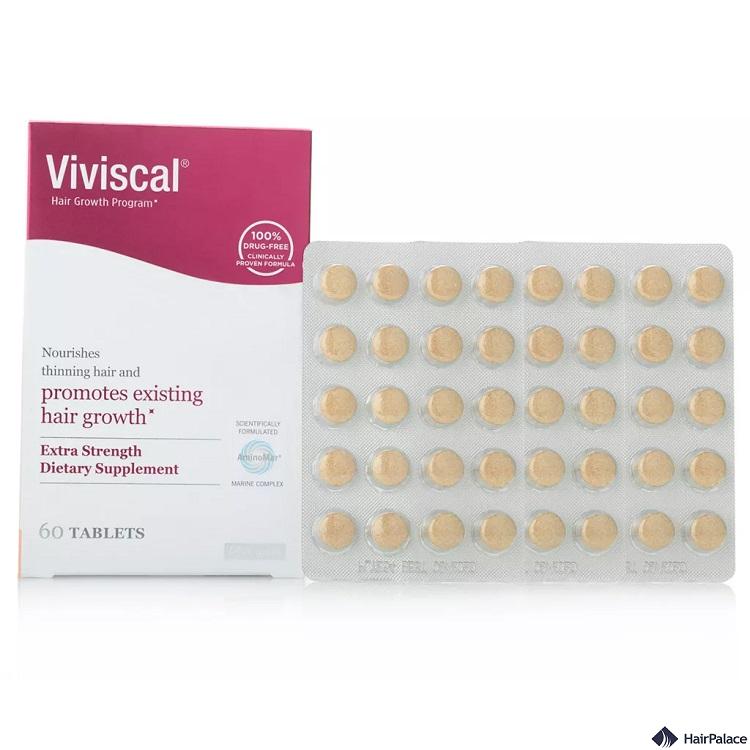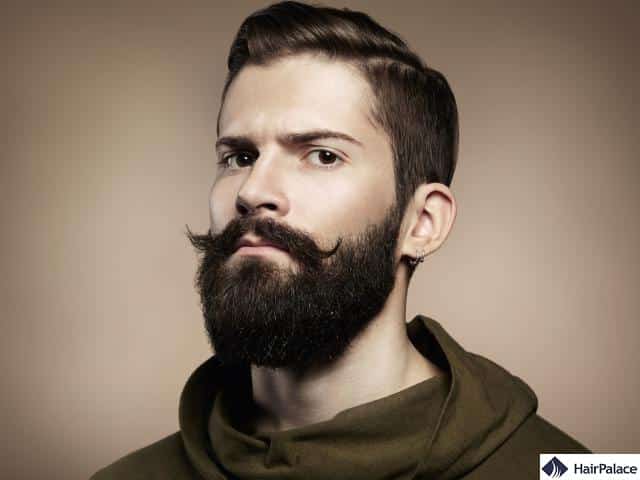Alopecia Barbae: Causes, Symptoms, and Treatment in 2025

Alopecia barbae is a mysterious condition that can cause small circular patches of hair loss in the beard area.
In some patients, it progresses slowly across your beard – in others, it can lead to total beard loss.
Like any form of hair loss, the condition can be devastating to overcome.
You’ll not only worry about your appearance, but your general health too – is an underlying medical condition causing this to happen?
This article will explain everything you need to know about alopecia barbae, including its potential causes and what symptoms you should look for along with treatment options.
What causes alopecia barbae?
Although the root cause of alopecia barbae is still debatable, many researchers have drawn some theories.
Many believe it to be an autoimmune condition that sees your body’s immune system mistakenly attack healthy hair follicles in the facial region.
The following may be what potentially triggers the condition into action:
- Gender: Because it only affects facial hair, it generally presents itself more often in men than women.
- Age: Although this condition can affect anyone, irrespective of age, it generally occurs more frequently in older people.
- Genetics: If someone in your family has suffered scalp alopecia areata or other autoimmune disorders, this may increase your likelihood of developing this hair loss type.
- Stress: During stressful periods, our body releases the hormone cortisol. This disrupts the natural hair growth cycle, can lead to thinning hair and may trigger such conditions.
- Medical conditions: Certain diseases and conditions, such as lupus, thyroid disorders, psoriasis, or diabetes, have also been linked with developing beard hair loss.
Alopecia barbae vs Alopecia areata

Because both alopecia areata and barbae can cause bald patches to develop, it can be easy to mistake them for each other.
But there is one key difference that sets them both apart – the area in which they affect most.
While alopecia areata can potentially cause facial hair loss, most hair thinning will occur on your scalp.
With this type of alopecia, patchy hair loss is concentrated on facial hair, primarily your beard.
What are the symptoms of alopecia barbae?
While every patient is unique, and symptoms and severities can vary, there are some warning signs to be aware of in the case of alopecia areata barbae.
The first symptom is the most apparent – patchy hair loss in your beard. Bald spots can develop quite suddenly or gradually over days or weeks.
In some patients, this hair loss can be quite severe and noticeable. In others, hair loss may be subtle and indistinguishable.
You may see that hair surrounding the edges of bald patches starts to turn white –another key symptom of developing the condition.
Because many researchers believe beard alopecia is an autoimmune response, you may feel skin irritation, redness, or tingling around your beard.
This is because the beard’s hair follicles are under attack.
Finally, be mindful of the size and shape of hair loss.
While small patches on your beard may not be too concerning – alopecia barbae beard can worsen over time.
These patches can grow, spread, and connect, causing significant bald spots.
Alopecia Barbae moustache
In certain cases, the condition may only affect the moustache leading to patchy growth and a strange look.
Gradually you may develop bigger and bigger bald patches which can sometimes lead to a complete loss of your moustache.
Celebrity with alopecia barbae – Louis Theroux

At the beginning of 2023, Louis Theroux shared his hair loss diagnosis with the world.
Based on the alopecia barbae before and after photo above it’s clear that the condition caused him to lose massive patches of facial hair in his beard and moustache.
Theroux went through an incredibly tough time as the condition deeply affected him both physically and mentally.
Thankfully his fans showed him outpouring support, reassuring him that patchy eyebrows and moustaches are nothing to be ashamed of.
Diagnosis of alopecia barbae
People are diagnosed after visiting their doctor or dermatologist for a physical exam.
They will inspect your beard hair and surrounding area for clinical symptoms of skin inflammation, dryness, irritation, and loss of hair.
They also search for any unusual hair growth in the area.
Your doctor may also consider your medical history and general health to see if a potential underlying condition is at play.
Finally, your doctor may also take a skin biopsy from the affected area to examine the tissue up close. They may also take blood samples.
Both are perfectly safe and give your doctor more information to amylase and rule-out other possible hair conditions.
Once formally diagnosed, your doctor or dermatologist can recommend an appropriate treatment.
Alopecia beard treatment – 5 Best options
While there is no known cure for alopecia barbae, there are several effective medications and treatment options for you to consider to help manage symptoms and prevent further loss from taking place.
They include:
- Alopecia barbae injection (Corticosteroids): They may help slow down or stop any harmful activity by your immune system. Corticosteroids come in many forms including tablets, topical serums and creams.
- Minoxidil: Topical medication that works by stimulating hair follicles to grow new hair and improving hair density.
- Diphencyprone (DPCP): The medication is applied directly to balding patches of your beard weekly, and it induces local allergic contact dermatitis, which triggers your immune system to produce new hairs.
- Anthralin: It helps slow the growth of skin cells, in turn reducing skin inflammation. They are used to treat skin conditions like psoriasis and hair loss conditions like alopecia areata.
- PRP: An innovative treatment that uses concentrations of a patient’s own platelets and growth factors to help trigger and induce new hair growth.
Alopecia barbae natural treatment – Top 3 picks
Home remedies may also help alleviate symptoms and prevent further hair loss from happening around your beard.
Please remember that results are often anecdotal, and you must be realistic about their effectiveness in correcting bald patches.
The top three remedies for treating alopecia barbae include:
1. Garlic

Alopecia barbae garlic treatment has long been a favourite hair care remedy among many patients.
It has antimicrobial and antifungal properties, helping keep hair clean.
Raw garlic is also highly nutritious, is easy to add to your diet, and can result in greater hair growth and reduced hair thinning.
That said, we need more research before we can say its efficacy.
2. Viviscal

As one of the world’s leading hair growth supplements, Viviscal is said to help promote hair growth by regenerating new cells and helping to strengthen existing ones.
It does this with its proprietary blend of proteins, lipids, and glycosaminoglycan, all derived from sustainable marine extracts.
3. Supplements
Supplements are one of the most widely used alopecia barbae home treatment options for those who feel reluctant to take medication.
Eating a nutritious diet is one of the most effective ways of combating autoimmune disease.
This way, your body has all the necessary tools to sustain hair regrowth.
Regarding hair, consider taking special supplements targeting specific vitamins and minerals, like zinc or biotin, which are both essential to hair production.
Can you get a beard transplant if you have alopecia barbae?

Although hair transplants have revolutionized how we treat hair loss, beard transplants may be ineffective at rectifying beard alopecia areata.
This is because, as a potential autoimmune disease, it may continue to trigger more hair loss after your procedure.
There is no guarantee that any transplanted hair will survive.
If your hair loss is substantial, such as alopecia totalis (total hair loss), you may not have enough donor hair to provide for the transplant.
When you attend your initial consultation, the surgeon will examine your beard alopecia and determine whether you are an ideal candidate.
How to cope with beard hair loss
Hair loss of any form can be an incredibly stressful thing to experience.
Not only might you be anxious about some underlying condition causing the problem, but you also have to deal with the emotional impact of bald patches in beard.
The condition can shatter anyone’s confidence and, in severe cases, can be near impossible to cover up.
But it’s important to remember that you are not alone in fighting this condition.
Our article has shown that many effective treatments can help manage symptoms and reduce further loss.
If you’re struggling emotionally, reach out to local support groups, who can answer questions and offer emotional support for you.
You may also want to talk to your doctor or therapist for further advice and support.
Last medically reviewed on January 2nd, 2025
- Alopecia areata. (n.d.).https://www.aad.org/public/diseases/hair-and-scalp-problems/alopecia-areata#treatment
- Cervantes J, et al. (2017). Alopecia areata of the beard: A review of the literature. DOI:https://doi.org/10.1007/s40257-017-0297-6
- Treatments for alopecia areata. (2017).https://www.naaf.org/alopecia-areata/alopecia-areata-treatments
- Alopecia Areata of the Beard: A Review of the Literaturehttps://link.springer.com/article/10.1007/s40257-017-0297-6
- Bald Patch in the Beardhttps://www.aafp.org/pubs/afp/issues/2014/0401/p583.html#afp20140401p583-b1
- Treatment of alopecia areata with topical garlic extracthttps://www.semanticscholar.org/paper/TREATMENT-OF-ALOPECIA-AREATA-WITH-TOPICAL-GARLIC-Maluki-Ddv/56c3c34224d76fc637f1d13d878d8b34f7af495a


